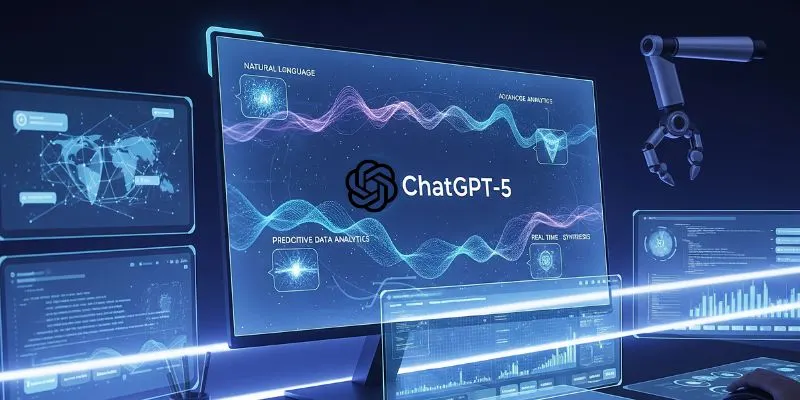OpenAI Gears Up for the Groundbreaking Release of GPT-5
By futureTEKnow | Editorial Team

By futureTEKnow | Editorial Team

OpenAI is preparing to unveil GPT-5, a revolutionary advancement in artificial intelligence expected to redefine user interaction and AI capabilities by late summer 2025 (supposed to be August). This new iteration promises significant strides in processing power, versatility, and intelligent reasoning, building on the foundations laid by its predecessor, GPT-4.
“we are releasing GPT-5 soon but want to set accurate expectations: this is an experimental model that incorporates new research techniques we will use in future models. we think you will love GPT-5, but we don’t plan to release a model with IMO gold level of capability for many months.”
-@sama on X / Sam Altman
One of GPT-5’s most transformative and expected features is its unified architecture, merging advanced reasoning and multimodal capabilities into a single, cohesive system. Unlike previous versions where users had to toggle between specialized models for different tasks, GPT-5 automatically selects the optimal approach to deliver faster, more accurate responses. This integration supports an array of inputs including text, images, voice, and video, creating richer, more adaptable experiences tailored to diverse user needs.
GPT-5 enhances conversational continuity and comprehension by expanding its context window—potentially up to 256,000 tokens. This vast increase enables the model to maintain context across long, complex interactions, such as detailed document analysis, multi-layered problem solving, and extended storytelling without losing track of prior discussions. Such advances are invaluable for professionals engaged in research, legal work, and content creation that require sustained coherence.
Building on the improvements from intermediate releases like GPT-4.5, GPT-5 integrates a hybrid reasoning framework capable of complex logical analysis and multi-step problem-solving. It adopts a sophisticated mixture-of-experts (MoE) architecture, dynamically allocating computational resources to specialized components depending on task demands. This ensures heightened precision and efficiency while maintaining response speed, a critical balance for handling diverse workloads ranging from casual questions to intensive technical challenges.
GPT-5 introduces refined memory features that allow it to retain information across sessions, supporting continuity in workflows and ongoing projects. Alongside this, autonomous tool integration endows the AI with the ability to independently execute multi-step tasks like scheduling, data retrieval, and command execution with minimal user input. These abilities mark a shift towards a more proactive AI assistant that anticipates user needs and adapts fluidly to context.
Behind the scenes, GPT-5’s architecture is scaled massively beyond GPT-4, with estimates suggesting trillions of parameters and exponentially larger training data sets. This expansion translates into a model 10 to 20 times more powerful, capable of handling more extensive and complicated queries with enhanced accuracy and fewer errors. The anticipated jump in computational resources also supports real-time multimodal processing for interactive and dynamic AI applications.
OpenAI’s measured rollout plan for GPT-5 will likely mirror past approaches, gradually expanding access to ensure stability and safety. Early enterprise access and careful testing underline the company’s commitment to launching only when the model meets stringent performance and ethical standards. As the AI community and industries await this milestone, GPT-5 stands poised to elevate the frontier of generative AI, driving deeper integration into everyday technology and expanding the horizon of what artificial intelligence can achieve.

SpaceX aims to nearly double launches from Vandenberg in 2025, facing support from federal agencies but strong objections from the state and local communities.

Traditional Medicare will pilot AI-assisted prior authorization in 2026 across six states, focusing on high-risk outpatient services. Clinicians retain final say, but incentives and access concerns loom as CMS tests fraud reduction and “gold card” exemptions. Here’s what providers and patients should know.

OpenArt’s new “one-click story” compresses scripting, visuals, and edits into ready-to-post short videos—fueling viral growth and a fresh IP debate. We break down how it works, adoption signals, what’s next (multi-character, mobile), and practical guardrails creators and brands should follow to stay original and compliant.

OpenAI’s o3 swept the Kaggle AI chess tournament, defeating xAI’s Grok 4–0. The victory fueled the intense rivalry between Altman and Musk, reshaping AI benchmarks.

NASA and Google’s AI-powered Crew Medical Officer Digital Assistant enables autonomous diagnoses for astronauts on Mars missions, redefining remote healthcare for space and Earth.

Pinterest’s CEO confirms that fully agentic AI shopping is years away, as the platform invests in AI-powered tools to enhance discovery, inspiration, and personalized shopping experiences for millions.

Shopify’s new AI shopping tools are transforming e-commerce, letting agents and chatbots deliver smooth, personalized shopping and checkout experiences across platforms. Learn how these innovations reshape online retail.

Meta has acquired WaveForms AI, a startup pioneering emotion-detecting voice technology. Learn what this means for Meta’s AI voice ambitions and the future of AI audio.

Tracelight is revolutionizing financial modelling for finance professionals with AI-powered Excel tools that automate complex tasks, reduce errors, and unlock new analysis capabilities. Learn how this next-gen solution changes the future of spreadsheets.

China’s Lanyue lander completed its first major test, showcasing advanced engineering for safe, crewed moon landings before 2030. Explore how this milestone shapes the space race.

Microsoft rolls out GPT-5 across its Copilot suite, integrating smarter AI for enterprise and personal users. Discover new features, free access, and what sets this launch apart.

OpenAI’s GPT-5 is now live for all ChatGPT users. It brings faster, smarter AI with improved reasoning, expanded context, and safer outputs—marking a major leap in generative technology.
To provide the best experiences, we use technologies like cookies to store and/or access device information. Consenting to these technologies will allow us to process data such as browsing behavior or unique IDs on this site. Thanks for visiting futureTEKnow.